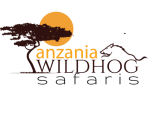Mkomazi National Park is a magnificent national park in northern Tanzania. Which was before an old Game reserve declared in 1951. This magnificent wilderness area was not known because of being a beat separate from the most visited parks in the northern part of Tanzania and didn’t get financial support of its infrastructure like other parks. But it hides the fantastic wilderness beaut of its kind.
Then in 2006 for the first time the Mkomazi was upgraded as national park with a total area of over 3234 sq. km, easily accessible and is a truly genuine wilderness area! Mt. Kilimanjaro can be viewed from the northwest. Pare and Usambara mountains from the south create a dramatic background. Kenya’s Tsavo National Park to the north borders the Mkomazi National Park. Both parks form the largest and most important secured ecosystems. It is the shelter to Rhinos, Elephants, Oryx, Zebras and Gerenuk a tall antelope Gazelle like with a long neck that brous always on the upper leaves around the bushes and trees. Mkomazi is located on the southern tip of the Sahel. It has a classic arid area with gray-green savanna bush, old baobab trees, and isolated rocky hills. In other places the scrub seas give way to savannah forests with umbrella acacias and bush – flat grassland valleys.
WILDLIFE
Mkomazi national park wildlife varies from Large to small mammals. The Black Rhinos and Wild dogs within the park are introduced for reproducing to increase their number while in the natural habitat as both became vanishing where Black Rhinos are kept in a large fenced area not letting them go far for their safety while Wild dogs are freely roaming around the park. It is characteristic of being dry scenery: giraffes, lesser kudu, impala, Grant’s gazelle and Gerenuk are commonly seen. They share the park with elephants, buffalo, Eland, Wildebeest, dikidiki, also predators, including lion, leopard and cheetah.
In-fact the park has different bird species which are estimated to be over 400 species. Among them are northern dry-country specials such as Shelley’s starling and three-streaked tchagra, purple Eurasian hoopoe, martial eagles and is the only place in Tanzania to spot the striking vulturine guinea fowl. Not only that but also migratory species such as European roller are present from November until April. Just to mention some.
MKOMAZI RHINO SANCTUARY
In 1989, the Tanzanian government invited the George Adamson Wildlife Preservation Trust to together after the government resolved to cease all grazing permission within Mkomazi and evicted all herders of cattle from the Maasai, Parakuyo, Pare and Sambaa in 1980s. George Adamson Wildlife Preservation set up fenced sanctuaries for African wild dog and black rhinoceros, and restoring the reserve’s infrastructure and supporting local communities with its outreach program build and as a result the endangered black rhino was introduced: the Mkomazi Rhino Sanctuary.
During the rhino poaching disaster, “protecting the strongholds” plays an important role. However, winning the hearts and minds of local communities was also important to ensure that Mkomazi never gets a mass rhino population extinction again. So in 2012, Prince William visited Mkomazi National Park to learn more about conservation efforts at the front lines of a Tanzanian national park.
The Mkomazi Rhino Sanctuary is working to build a sustainable breeding population of black rhinos, whose offspring will be used to strengthen the existing populations in Tanzania. The rhinos in the Mkomazi Rhino Sanctuary carries up nearly 30% of the total black rhinoceros population in Tanzania. This makes the Mkomazi rhinos extremely important, not only for the country, but also for the future of this endangered species. While in Mkomazi, Prince William also visited Mkomazi’s educational initiative at Rafiki Wa Faru, where children from 14 local villages learn all about rhinos and other wildlife in the hope that Mkomazi’s rhino population will never ever be wiped out by poachers. Remember that children can play a significant role in successful conservation if they appreciate wildlife and understand its importance from an early age.
ACTIVITIES AT MKOMAZI NATIONAL PARK.
- Day Game drive
- Walking safari
- Bird watching
- Natural walk
- Filming
THE BEST TIME TO BE AT MKOMAZI NATIONAL PARK
It is between June to October which is the dry season and the beauty of its scenery and views of the mountains are the best in the wet season November to May but the park is not a prime wildlife observing destination.
TRAVEL TIME TO MKOMAZI NATIONAL PARK
Traveling distance and time vary from Place to place and the riding speed spent on your way but in-fact the nearest point that are common toward the park are as follow.
From Tanga: 4.5 hrs drive
From Pangani: 6 hrs drive
From Usambara Mountains: 5.5 hrs drive
From Kilimanjaro: 5.5 hrs drive


